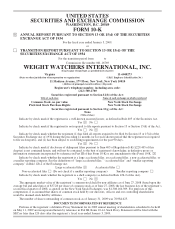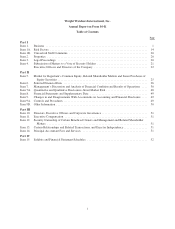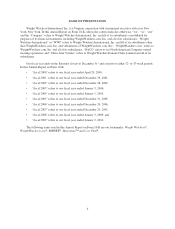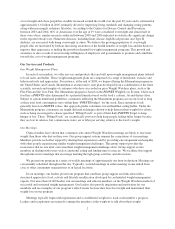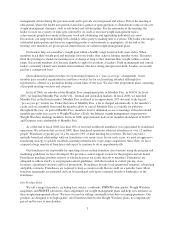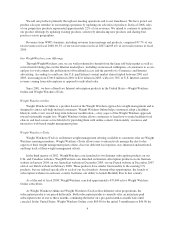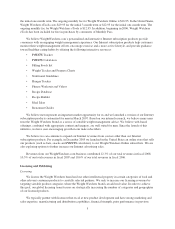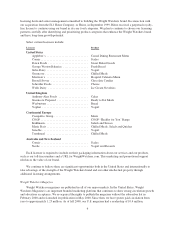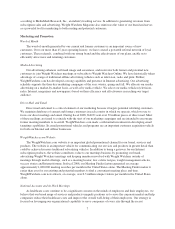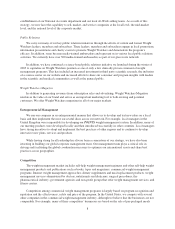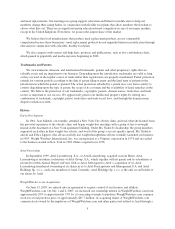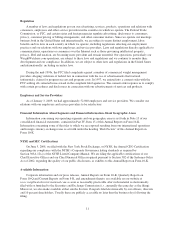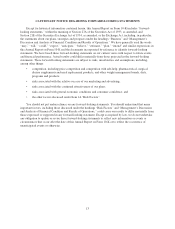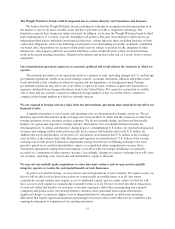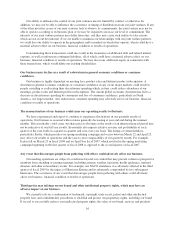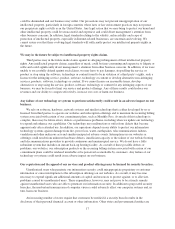WeightWatchers 2008 Annual Report Download - page 21
Download and view the complete annual report
Please find page 21 of the 2008 WeightWatchers annual report below. You can navigate through the pages in the report by either clicking on the pages listed below, or by using the keyword search tool below to find specific information within the annual report.establishment of our National Accounts department and our local At-Work selling teams. As a result of this
strategy, we now have the capability to sell, market, and service companies at the local level, the mid-market
level, and the national level of the corporate market.
Public Relations
We carry out many of our key public relations initiatives through the efforts of current and former Weight
Watchers leaders, members and subscribers. These leaders, members and subscribers engage in local promotions,
information presentations and charity events to promote Weight Watchers and demonstrate the program’s
efficacy. In addition, some become media-trained ambassadors and represent us in various local public relations
activities. We currently have over 300 media-trained ambassadors as part of our grass roots network.
In addition, we have continued a science-based public relations initiative we launched during the winter of
2005 to capitalize on Weight Watchers position as one of only a few clinically proven commercial weight
management programs. This has included an increased investment in third party scientific research, the inclusion
of a science center on our website and increased efforts to share our consumer and program insights with leaders
in the scientific and medical communities as well as the general public.
Weight Watchers Magazine
In addition to generating revenues from subscription sales and advertising, Weight Watchers Magazine
reinforces the value of our brand and serves as an important marketing tool to both existing and potential
customers. We offer Weight Watchers magazines in all of our major markets.
Entrepreneurial Management
We run our company in an entrepreneurial manner that allows us to develop and test new ideas on a local
basis and then implement the most successful ideas across our network. For example, local managers in the
United Kingdom were responsible for developing our POINTS weight management system. In addition, many of
our meeting products were developed locally and then introduced successfully in other countries. Local managers
have strong incentives to adopt and implement the best practices of other regions and to continue to develop
innovative new plans, services and products.
While having strong local leadership has always been a cornerstone of our strategy, we have also been
investing in building our global corporate management team. Our management team plays a critical role in
driving and facilitating the global coordination necessary to optimize our international assets and share best
practices across geographies.
Competition
The weight management market includes self-help weight management regimens and other self-help weight
management products and publications such as books, tapes and magazines; commercial weight management
programs; Internet weight management approaches; dietary supplements and meal replacement products; weight
management services administered by doctors, nutritionists and dieticians; surgical procedures; the
pharmaceutical industry; government agencies and non-profit groups that offer weight management services; and
fitness centers.
Competition among commercial weight management programs is largely based on program recognition and
reputation and the effectiveness, safety and price of the program. In the United States, we compete with several
other companies in the commercial weight management industry, although we believe that the businesses are not
comparable. For example, many of these competitors’ businesses are based on the sale of pre-packaged meals
8


